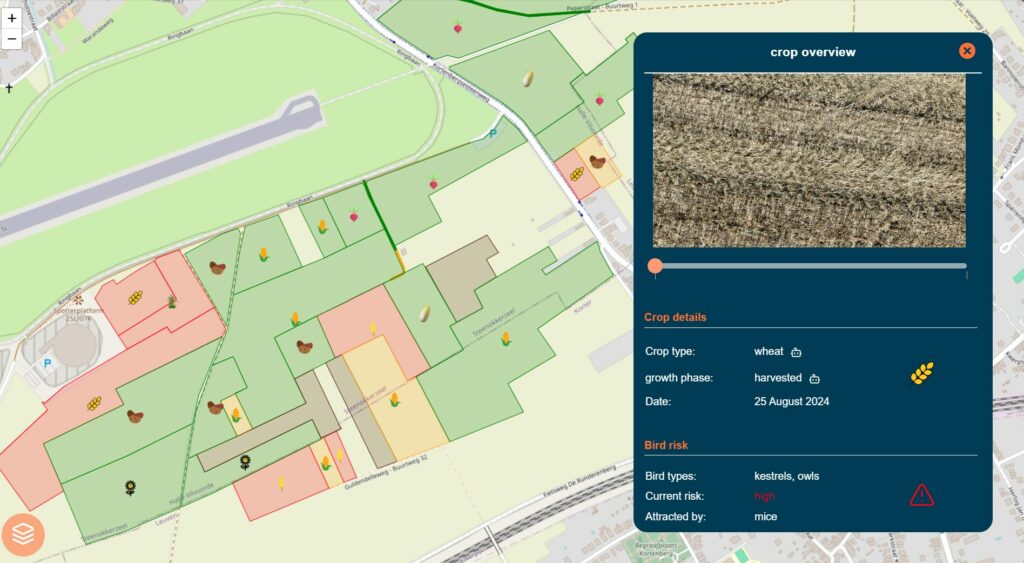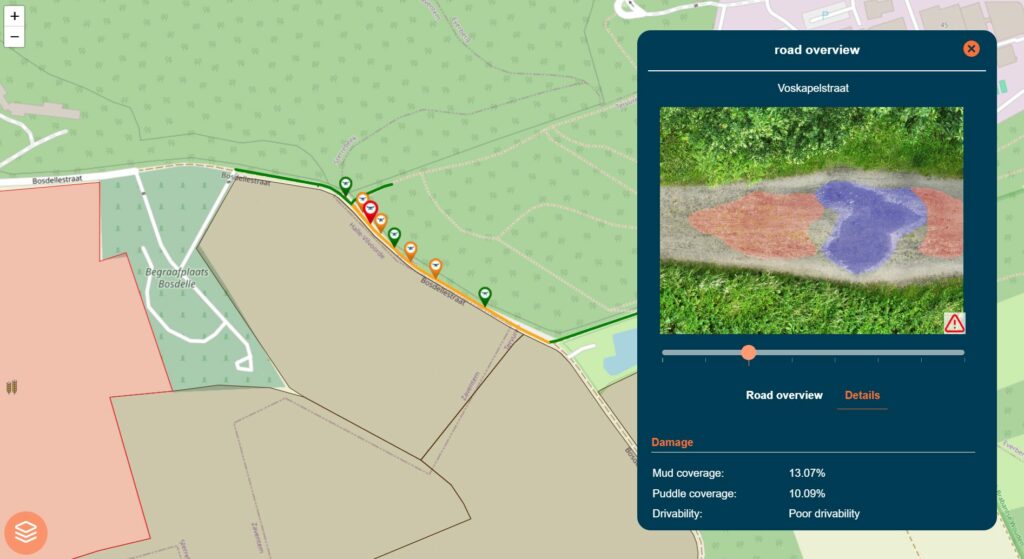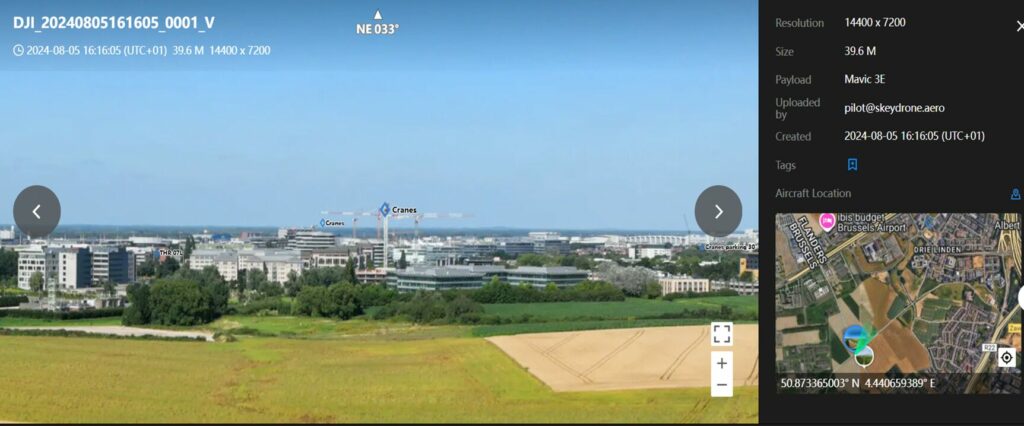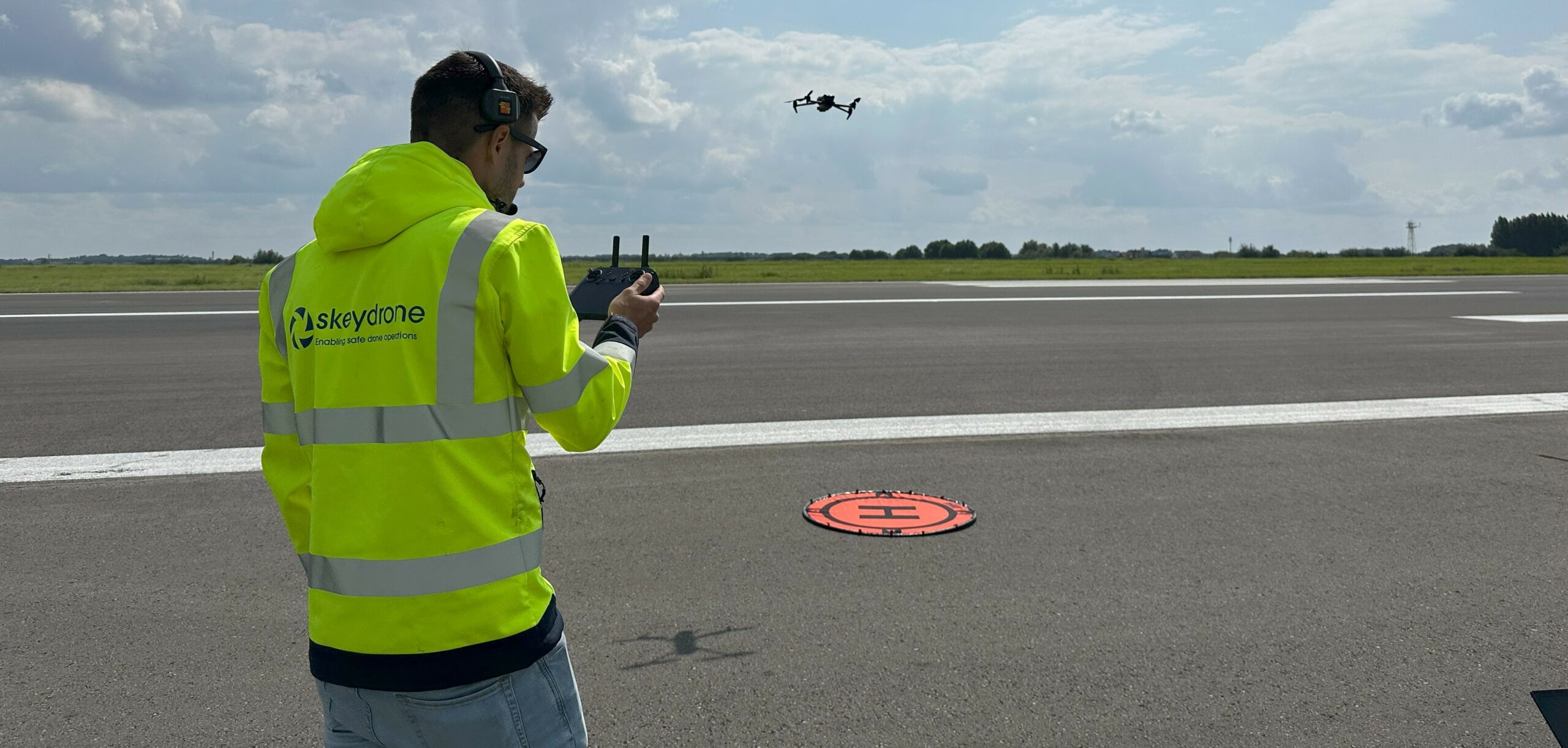About Brussels Airport
Brussels Airport is one of the most important airports in Europe. In 2024, Brussels Airport welcomed 23.6 million passengers and transported 733,000 tonnes of cargo. With its SHIFT 2027 strategy, the airport intends to strengthen its position as a major European hub, accelerate its ambitious sustainability goals, and continue to diversify its activities by focusing on innovation and cooperation.
The Challenge
Brussels Airport spans a vast 1,245 hectares, intersecting multiple municipalities. Managing such a large and complex area presents significant challenges. Inspection staff must frequently cover extensive zones, including areas beyond the airport perimeter. Tasks often involve transitions between airside and landside, consuming valuable time.
These challenges underscored the need for innovative solutions to enhance safety, efficiency, and data accuracy.
The Solution
Brussels Airport tasked its subsidiary, Airport Intelligence, to explore the potential of drone technology to support the inspection staff.
Together with SkeyDrone, they identified three use cases where drone applications can be a valuable additional support for the inspection teams to enhance safety, efficiency, and data accuracy across airport premises: crop inspections in light of wildlife management, fire intervention route evaluation and obstacle detection.
To investigate these use cases, the SkeyDrone drone pilots captured over 2,000 high-resolution images at various locations around the airport during different seasons and weather conditions. These images were used to feed artificial intelligence (AI) models or image comparison software, resulting in enhanced airport safety and increased operational efficiency.
+2,000
high-resolution images from various locations and different weather conditions
>90%
accuracy of the AI models
Davy Van Hyfte
Head of Compliance and Certification
Brussels Airport Company
These use cases align perfectly with our long-term strategy to leverage technology for improving operational safety. We’re committed to continuously improving our processes and reinforcing our teams with the necessary tools and technology to provide a safer and more reliable experience for all passengers and stakeholders.
1. Crop Inspections: Reducing Bird Strike Risks
Bird strikes pose a significant threat to aviation safety as they can cause aircraft damage, operational disruptions, and even fatalities. Birds are often attracted to aerodromes due to the availability of food, water and shelter. The Bird Control Unit at Brussels Airport conducts regular inspections of vegetation and crops within the approach paths to runways, as certain crops can attract birds that pose safety risks. As the airport area is extensive, drones can be a valuable tool in covering the entire area comprehensively.
Over one year, the full growth phase of 60 fields surrounding the airport was monitored using drone images captured during critical agricultural phases. The images were processed to train an AI model that was able to recognize crop types, assess growth stages, and correlate these factors with rodent and bird activity.
The results are displayed on an interactive map showcasing all surveyed fields. Users can easily identify the crop type and its associated risk level through intuitive symbols. The application can generate automated alerts and enhances situational awareness, enabling the Bird Controllers to take proactive measures to mitigate risks, ultimately improving runway safety and operational efficiency.

2. Fire Intervention Route Evaluation: Enhancing Emergency Response
Aerodrome operators are legally required to conduct an assessment of the approach and departure areas within 1,000 meters of the runway to determine available intervention options. Understanding the terrain and obstacles within this critical zone allows for better planning and execution of rescue and firefighting operations.
Brussels Airport has two fire stations. The fire rescue teams need to be able to operate beyond the airport boundaries. To plan optimal routes, they must be aware of the condition of access roads outside the airport limits, including the presence of mud, pits, and puddles to validate their operational plans.
The fire department lacked visibility of the unpaved access roads around the airport needed for runway excursions. To address this, 700 images of gravel roads were captured to train an AI model that predicts road accessibility, taking into account the amount of mud and puddles, as well as weather data.
The results are displayed on an interactive map featuring all surveyed gravel roads, highlighting the most recent accessibility indicators using a color code. This application helps the teams to identify areas that may require immediate attention, ensuring that fire rescue teams have clear and accessible routes to respond rapidly in the event of an emergency. It offers near real-time road condition insights, aiding effective planning and faster, safer fire responses.

3. Obstacle Detection: Managing Temporary Hazards
While obstacles around the airport are mapped regularly, temporary obstructions like cranes also need to be monitored. Regular inspections are crucial to mitigate risks, support air traffic management, and maintain accurate aeronautical information.
Between 100-200 horizon drone shots were taken from runway approaches to document structures, buildings, cranes, and other potential obstructions. A software tool enables users to easily compare the latest shot with the previous one, allowing for the detection of new obstacles. It also offers geolocation and annotation features to map and tag detected obstacles. The software tool facilitates efficient analysis, ensuring that obstacles are tracked and managed effectively.

Conclusion
While stray drones present risks and challenges for airports, the use of drones also offers potential to enhance operational efficiency, safety and data accuracy.
Davy Van Hyfte, Head of Compliance and Certification at Brussels Airport Company concludes:
Drone technology can not only enhance safety at Brussels Airport but also help streamlining our processes, allowing us to further equip our teams and allocate resources more effectively. Drones are instrumental in helping us achieve our vision of a smarter, more efficient, and safer airport environment.
